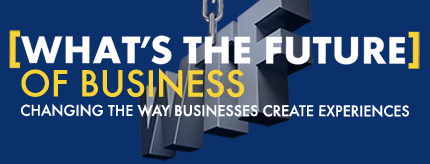Change is in the air. With disruptive technologies hitting businesses from the outside in and the inside out, how companies invest in technology and ultimately how people use it to get work done is under significant re-evaluation. At the same time, the rising workforce clash between older and younger generations is also pushing HR to radically reform management processes and education programs.
Indeed, change is the air. In fact it’s imminent. But change is never programmatic nor is it ever easy. And, all too often, change is a reactive response to areas of disruption rather than a proactive step to head it off.
With so many factors affecting the future of business, where do leaders focus? What do they prioritize?
This is a worldwide issue. As Gallup research shockingly revealed in late 2013, only 13% of employees around the world are actively engaged at work. What’s worse is that more than twice that number is completely disengaged, toxic and at risk of spreading negativity to others.
It only gets worse.
Deloitte released its Global Human Capital Trends report in in 2014, which included insights from 2,500 businesses in 90 countries. The report’s author Josh Bersin observed a sobering trend, “the message is clear: companies are struggling to engage our modern, 21st century workforce.”
Key findings from Deloitte’s report include:
- 86% of business and HR leaders believe they do not have an adequate leadership pipeline (38% see it as an urgent problem)
- 79% believe they have a significant retention and engagement problem (26% see it as urgent)
- 77% do not feel they have the right HR skills to address the issue (25% urgent)
- 75% are struggling to attract and recruiting the top people they need (24% urgent)
- Only 17% feel they have a compelling and engaging employment brand.
I can sum up my response in one word, “yikes!”
Between Gallup and Deloitte, there’s a screaming sense of urgency that should rattle executives into action. That data is overwhelming. The fear is real. The risk of not doing anything about it or not trying hard or fast enough is self-destructive. What’s clear is that the solutions are not easy. And without leadership commitment, solutions are implausible.
There’s something else to consider. With new technology a constant disruptor and the next generation of employees (Generation Z) already exhibiting different behavior sets than that of Generation Y, we can assume that change isn’t a one-time affair…it’s continual. Therefore change must of course begin with people…by them and for them. To lead though, not just react to threats and trends, requires a more substantial approach. We are talking about changing the culture of the company to be more innovative, adaptive, and resilient. That takes leadership.
Culture starts with vision…a vision for where we are going and why. Leadership must also lead and not rely on processes and systems. People must believe that leadership is relentless in its pursuit for a living and inclusive culture that everyone can stand behind. To design and foster a new culture also takes empowerment against that vision, inclusion so that everyone feels that they are part of its DNA, and most importantly instilling and building trust among leaders, managers, and especially employees.
Complicated yes. Effective, yes. Deloitte found that work teams which have high levels of inclusion outperform others by 8:1.
From there, businesses must overhaul and humanize their performance management process. A new vision sets the bar higher for everyone.
This requires new standards, processes and systems for…
- Management
- Performance
- Training
- Communication
- Collaboration
- Reward and recognition
- Leadership behavior
If it’s one thing you can bet on moving forward is that people, and how you lead and inspire them, will become one of your greatest assets if not an absolute competitive advantage. But what research and experience is already showing is that to succeed here now and in the times ahead takes a reboot of the approach you have today. Just because things have been done a certain way doesn’t mean its going to work in a time when people, what they value, and the technology they use are radically different that the aging infrastructure that manages them today. This is a time for innovation. This is a time to re-write the employee handbook. And, this takes leadership, not management.
ctrl-alt-del
Brian Solis
Connect with me…
Twitter | LinkedIn | Facebook | Google+ |Youtube | Instagram | Pinterest
Image Source: Shutterstock

